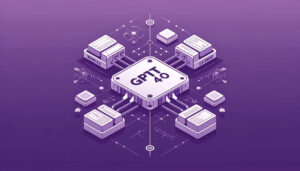Defending the Digital Frontier: Understanding and Mitigating Cybersecurity Threats

What are Cybersecurity Threats?
Cybersecurity threats encompass malicious actions aimed at stealing data, causing damage, or disrupting computing systems. These threats are broadly categorized into malware, social engineering, man-in-the-middle (MitM) attacks, denial-of-service (DoS) attacks, and injection attacks.
Cyber threats can emerge from various sources including hostile nation-states, terrorist groups, individual hackers, and even insiders like employees or contractors who misuse their access. Below, we explore the various types of cybersecurity threats, their sources, and effective solutions to mitigate them.

Types of Cybersecurity Threats
- Malware Attacks
- Viruses: Malicious code that attaches to legitimate applications, executing harmful activities when the application runs.
- Worms: Exploit software vulnerabilities to spread across networks, potentially launching distributed denial-of-service (DDoS) attacks.
- Trojans: Disguised as legitimate software, these infiltrate systems when downloaded, granting control to attackers.
- Ransomware: Encrypts data, demanding ransom for decryption keys, though payment doesn’t guarantee data recovery.
- Cryptojacking: Unauthorized use of a victim’s computing resources to mine cryptocurrency, degrades system performance.
- Spyware: Secretly collects sensitive information, such as passwords and payment details, compromising user privacy.
- Adware: Tracks user activity to deliver targeted advertisements, which, though not always malicious, can invade privacy.
- Fileless Malware: Utilizes legitimate system files to perform malicious actions, evading traditional antivirus detection.
- Rootkits: Grants attackers remote control over systems by embedding themselves in applications, operating systems, or firmware.
- Social Engineering Attacks
- Baiting: Entices victims with promises of free offers to extract sensitive information.
- Pretexting: Deceives victims by impersonating authoritative figures to obtain confidential data.
- Phishing: Sends deceptive emails to gather sensitive information; includes targeted forms like spear phishing and whaling.
- Vishing and Smishing: Employ phone calls and text messages to deceive and extract information.
- Piggybacking and Tailgating: Gaining physical access by exploiting the credentials of authorized individuals.
- Supply Chain Attacks
- Target software development and distribution processes to insert malicious code into legitimate applications. This can involve compromising development tools, code signing procedures, or distributing malware via software updates, affecting applications trusted by users.
- Man-in-the-Middle Attacks (MitM)
- Intercepts and alters the communication between two parties. Examples include Wi-Fi eavesdropping, email hijacking, DNS spoofing, IP spoofing, and HTTPS spoofing. Attackers can steal data or impersonate legitimate parties to deceive users.
- Denial-of-Service Attacks (DoS)
- Overloads systems with excessive traffic, disrupting normal operations. Techniques include HTTP flood, SYN flood, UDP flood, ICMP flood, and NTP amplification, which can bring down websites and online services.
- Injection Attacks
- Exploits vulnerabilities to insert malicious code into applications. Common vectors include SQL injection, code injection, OS command injection, LDAP injection, XML external entity (XXE) injection, and cross-site scripting (XSS). These attacks can expose sensitive data, execute DoS attacks, or take over systems.

Common Sources of Cyber Threats
- Nation States: Hostile countries aim to disrupt communications, cause disorder, and inflict damage on local companies and institutions.
- Terrorist Organizations: Seek to destroy critical infrastructure, threaten national security, disrupt economies, and cause harm to citizens.
- Criminal Groups: Organized hackers use phishing, spam, spyware, and malware to extort, steal, and scam for financial gain.
- Individual Hackers: Motivated by personal, financial, or political reasons, they develop new threats to enhance their reputation.
- Malicious Insiders: Employees or contractors misuse their access to steal information or damage systems for personal or economic gain.

Cybersecurity Solutions
To combat these threats, organizations deploy various security measures:
- Application Security: Protects software during development and production from vulnerabilities and network attacks.
- Network Security: Monitors and filters network traffic to identify and block malicious activities.
- Cloud Security: Secures cloud environments by detecting vulnerabilities and misconfigurations.
- Endpoint Security: Protects devices like servers and workstations from malware and unauthorized access.
- IoT Security: Enhances visibility and security for connected devices.
- Threat Intelligence: Aggregates data on attack signatures and threat actors to inform and enhance security measures.





